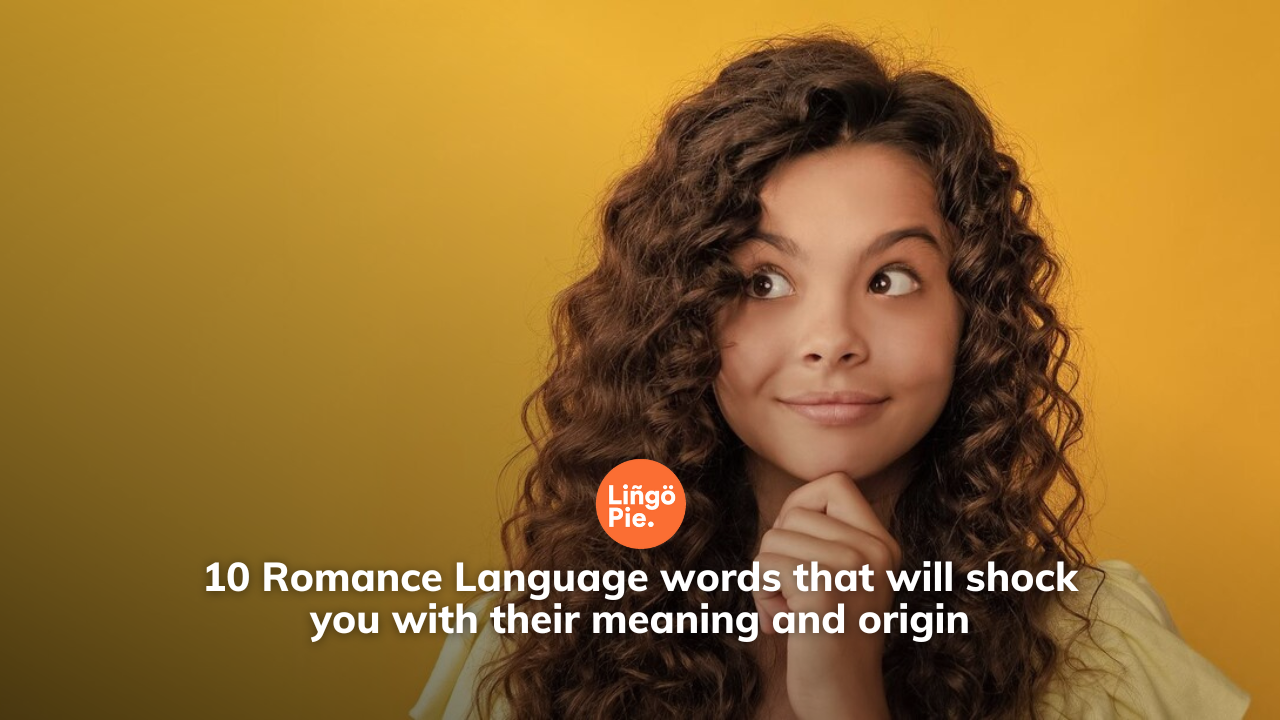This is one for the Spanish teachers! If you are looking for new, engaging, and scientifically-proven methods to teach kids Spanish, you are in the right place.
We are going to talk about how you can incorporate cinema into your Spanish classes to help students improve their speaking, reading, writing, and listening.
By the end of this guide, you will understand how Spanish learners can benefit from learning through movies. You will also learn how to integrate films into the Spanish curriculum.
Finally, we'll leave you with some top teaching tips to take into your school's Spanish lessons.

Table of Contents:
- Teaching Spanish in School
- Movies: A Great Teaching Resource
- How Movies Help Students
- Final Thoughts: The Best Teaching Methods
- FAQs: How to Teach Spanish in School
- Summing Up: How to Teach Spanish in School with Movies
Teaching Spanish in School
Teaching kids Spanish in a school is more formal than tutoring and comes with some more responsibilities. For instance, Spanish teachers need to follow a curriculum and get students through official exams.
This means when it comes to lesson planning, you will need to comply with the requirements set by your school and local authority and cover all of the necessary grammar, vocabulary, and language skills. However, this does not mean there is no room for creativity and new ideas.
You can still play with the classroom environment and incorporate exciting new teaching tools into Spanish class. One of these exciting ideas is to use movies as a language-learning resource.
Movies: A Great Teaching Resource
Movies are a great teaching tool for a number of reasons. For one, they provide high-quality exposure to a new language for students. What's more, students are far more likely to take on new information when they are having fun. So, learning from movies is great for information retention.
Experts at Lingopie built their streaming platform around this language-learning methodology. On their site, you can watch movies and TV shows in 8 popular foreign languages
Any movies made and set in a Spanish-speaking country will feature native Spanish speakers using their language in authentic and natural situations. Hearing dialogue in Spanish-language movies is very beneficial for learning Spanish phrases in context. It is also good for exposure to the various Spanish accents around the globe.
As there are so many Spanish-speaking countries around the world, there is a seemingly endless supply of great quality Spanish-language content out there that you can use in the classroom.
How Movies Help Students
Now, let's look at how movies can help students learn to speak, read and write in Spanish and develop their listening skills. These are the main language skills needed to master a foreign language.
We will provide some tips for teaching the Spanish language in schools with these skills in mind. With a little help from the world of Spanish cinema, your language classes can become the most entertaining, dynamic, and engaging of all the classes on the children's schedules.
Speak Spanish
Starting with the language skill that most students struggle with the most, movies can encourage students to practice speaking Spanish in school with more confidence, fluency, and better pronunciation.
By watching movies from various different Spanish-speaking places, they can learn Spanish accents from around the world and develop an accent of their own. This is an important step in building fluency and taking on an identity as a second-language Spanish speaker.
In the classroom, kids can focus on pronunciation and accents by listening to dialogues in movies and repeating useful words and phrases aloud. Moreover, more advanced learners can try to identify the country or region in which the film is set based on the accents or vernacular they hear.
A Spanish teacher can make the learning experience active and engaging by asking students to create a dialogue for characters in the movie. This is a great way to get students to talk in groups, practice writing and develop their vocabulary acquisition.
When students perform their dialogues for the rest of the class and the teacher, they can learn new Spanish words from one another and build their confidence in speaking in front of people.
Read and Write in Spanish
Next, movies can help you teach literacy in a foreign language in a way that students can enjoy. The more relevant literacy exercises are to the kids' lives and the things they enjoy, the better they will take in new information.
When teaching a child Spanish reading and writing skills, it is essential to make classes engaging, rather than totally focused on the rules and structures of written Spanish.
Learning Spanish literacy does not have to be too dry or serious, even in a school setting. A great Spanish teacher will set reading and writing exercises that allow kids to get creative, using any new vocabulary they have noted from watching movies.
Instead of being bogged down by textbooks and worksheets, kids can learn with activities connected to the movie they are watching in class. For instance, they can read movie reviews or draft their own to be shared with the rest of the students - in the target language, of course.
This brings all of their learning together and means lessons can be fun as well as educational. You can also introduce new grammar concepts or sets of vocabulary within the context of the movie.
Moreover, a teacher can reinforce this learning with games like Kahoot! In this whiteboard game, a grammar or vocabulary question relevant to the movie will appear on the screen. Then, under the pressure of a ticking clock, students have to choose the right answer on their phone screens.
The question may ask students to choose the correct definition of a word or identify the tense or mood used in a sentence, for example. This game is a huge hit with children of all ages and stages.
Develop Listening Skills
Finally, movies can be used in school to improve students' listening comprehension and understanding of native speakers with various accents.
Especially if you were taught Spanish as a second language, rather than as a native speaker yourself, using movies featuring natives is a great way to ensure students get to hear truly authentic Spanish from all around the world.
Movies can be better resources for listening exercises than the short audio clips generally used in schools which are heard in isolation and often have no context attached to them. By contrast, a movie is bursting with cultural context and has a fully-developed plot to help students understand the situation.
This makes the language used much more accessible and provides a deeper meaning to new words and phrases learned in listening exercises. You can provide a list of idiomatic phrases used in a movie scene and ask the children to determine their meaning based on the context of the scene.
Encourage student collaboration and conversations in the target language as they work together to come up with the definitions. Any time you can promote student-talking-time, you should. This is essential for optimizing learning and it is great for listening and speaking practice in school.
Lastly, if your chosen movie features music, this is also a great tool for listening comprehension lessons. Students can play games related to the music, such as fill-in-the-gap exercises.
Check out Lingopie music to learn a bit more about how kids can learn Spanish with music. Moreover, you can get some top recommendations on this site for the best songs to start with.
Final Thoughts: The Best Teaching Methods
Now that you know how you can teach children Español in a school environment using movies, while sticking to the curriculum and examination preparation, let's reflect on the best methods all teachers should use.
Effective Spanish teaching incorporates a variety of techniques and methodologies so that every student in the class feels represented, regardless of their own personal learning style. For instance, tactile learners might enjoy more active lessons, while auditory learners may thrive in listening practice exercises.
Moreover, the activities and games you use in lessons should reflect that you are teaching students of different age groups. You will not be able to use the same lesson plans for five-year-olds that you have used successfully in high school Spanish classes.
Regardless of what age you are teaching, all school students will respond well to positive feedback and reinforcement. Some great ideas for positive reinforcement include allowing students to pick the next movie they watch when they have done well, or bringing snacks for the movie lessons.
Finally, it is most important to make learning engaging and enjoyable when you are covering topics that students often dislike. For instance, when planning grammar lessons, such as verb tenses and verb conjugations, it is a great idea to incorporate games, movies, and other enjoyable elements into the lesson.
Do Not Forget the Importance of First Languages
Depending on your student's first language, they might find Spanish to be an accessible second language or quite a challenging new language. If they already know the Latin alphabet, and particularly if they already speak a Romance Language, Spanish should be fairly straightforward for them.
However, if they are learning a new alphabet and a series of new sounds, you will have to focus a lot more on the basics. You can use the phonetic alphabet to help you explain the alphabet and the different vowel and consonant sounds.
Lastly, remember that Spanish and other European languages have a lot of words with shared roots. For instance, the Spanish word horror is "horror" in English and Portuguese, "orrore" in Italian, and "horreur" in French. This means a lot of vocabulary can be intuitive for many European students.
However, if you have some students in the class or a whole classroom of students who do not speak any European or Latin languages, you cannot assume that anything is obvious or intuitive for them.
If you keep all of this in mind when you are delivering your classes, you can make sure to be a great, compassionate, and effective school teacher.
FAQs: How to Teach Spanish in School
What should I teach first when teaching Spanish?
If you are teaching absolute beginners in Spanish, it is usually recommended to begin with the alphabet. This is particularly important for students who use a different script altogether. Familiarity with letters and their corresponding sounds is an essential first step. Next, numbers and the most common nouns and verbs are generally taught.
How can I be a good Spanish teacher?
The key to being a good Spanish teacher is to be patient, kind, engaging, and understanding. Let your students know you hear them and understand that learning a language is a long process. Try to make lessons varied, fun, and appealing to students with different learning styles.
Can I teach Spanish without a degree?
Yes, there are ways to teach Spanish without a degree. Depending on the country and the type of school, there are Spanish teaching jobs that do not require a Spanish degree.
You can also teach online Spanish classes or tutor privately without a teaching degree or a Spanish degree. However, it is generally easier to find work as a Spanish teacher with a degree in Spanish and or education.
How do I teach basic Spanish?
There are different accepted ways to teach basic Spanish. Some teachers use their students' mother tongue to give instructions and explanations and just do exercises in Spanish, while other teachers prefer the immersive approach of only using Spanish in the classroom.
Depending on your school's ethos and curriculum, you might be instructed to take a specific approach.

Summing Up: How to Teach Spanish in School with Movies
Any school Spanish teacher can use the tips in this guide to incorporate movies into their Spanish lessons.
This method is proven to be successful as it makes language learning accessible and fun. Moreover, using movies in a foreign language class can help students to develop their speaking skills, as well as reading, writing, and listening.
Whether you are instructing beginners or more advanced Spanish learners, language students all respond well to bringing entertainment and culture into the classroom.You can find some great Spanish-language content on Lingopie, complete with interactive transcripts, dual subtitles, digital vocabulary flashcards, and quizzes.






![30+ Modern English Slang Terms For Money [Guide]](/blog/content/images/size/w300/2025/06/Slang-term-for-money.jpg)
![5 Official Spanish Language Tests To Show Your Proficiency Level [Guide]](/blog/content/images/size/w300/2025/06/Spanish-Language-Tests.jpg)

![Why Memorizing Spanish Words Won’t Make You Fluent [Tips]](/blog/content/images/size/w300/2025/06/how-to-practice-spanish-vocabulary.jpg)